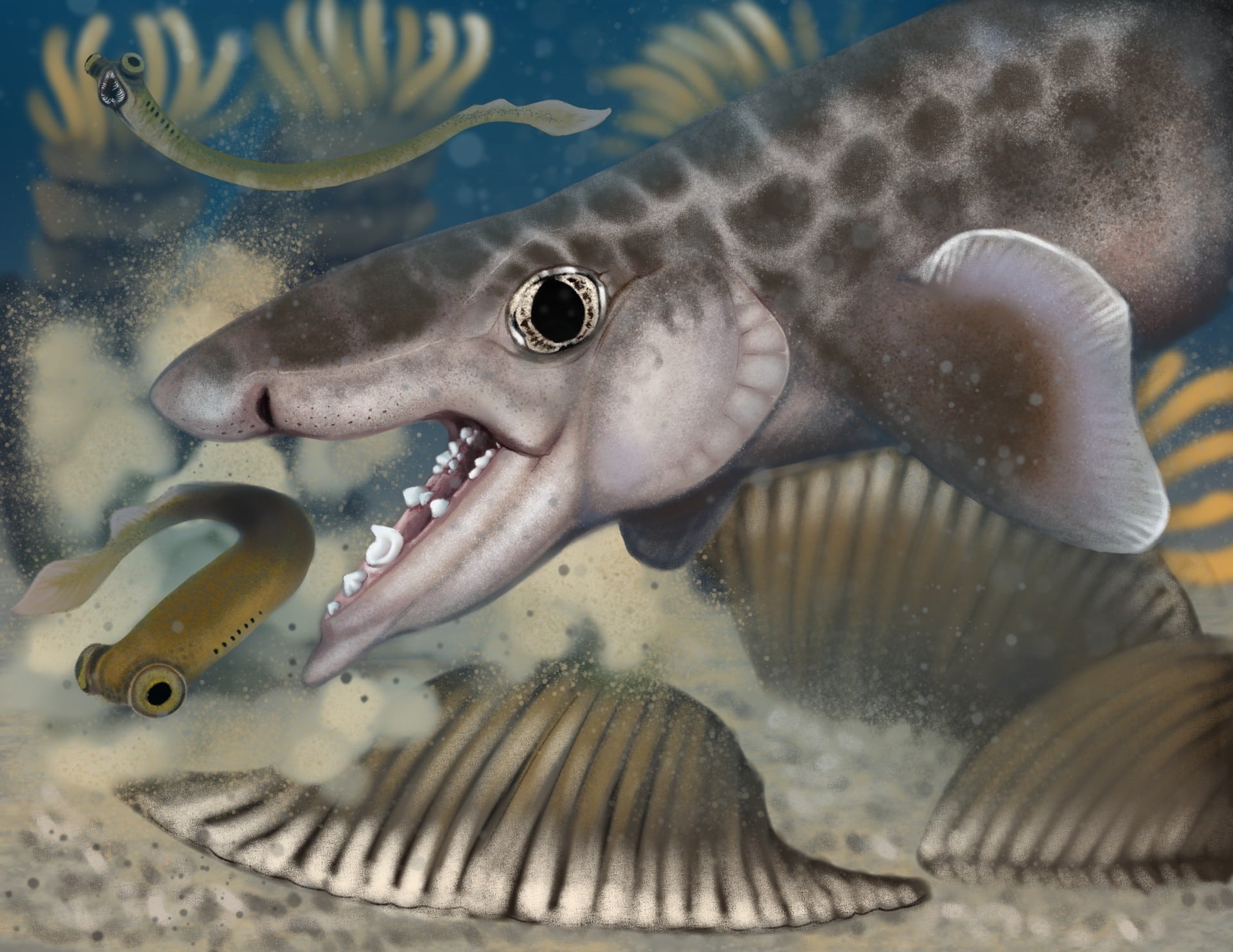Ancient Shark Discovered in World’s Longest Cave System
Source: GreekReporter.com

Researchers have uncovered the ancient fossil remains of a small prehistoric shark deep inside Mammoth Cave in Kentucky, USA, the world’s longest known cave system.
The species, identified as Macadens olsoni, lived roughly 340 million years ago. Measuring less than a foot in length, the shark had a curved row of teeth adapted for crushing prey, likely feeding on mollusks and worms, according to the National Park Service.
“This discovery is a remarkable addition to our understanding of ancient marine life and underscores the importance of preserving and studying our natural history,” said Barclay Trimble, superintendent of Mammoth Cave National Park.
A window into prehistoric oceans
The rocks that make up Mammoth Cave formed 320 to 360 million years ago when the area lay beneath a shallow saltwater body known as the Mississippian Sea. The cave passages, however, developed far later—about 10 to 15 million years ago—as water from rivers and streams carved through the limestone.
To date, explorers have mapped over 426 miles (686 kilometers) of Mammoth Cave, although its true length remains unknown. The cave walls preserve a rich fossil record, with over 70 extinct fish species documented to date.
The newly described fossil was recovered from the Ste. Genevieve rock formation dates to the Carboniferous period, which spanned from approximately 358.9 million to 298.9 million years ago.
Honoring Mammoth Cave and its scientists
The genus name Macadens pays tribute to Mammoth Cave, while the species name olsoni honors Rickard Olson, a retired park scientist recognized for his decades of work in documenting the site’s fossils.
In honor of Shark Week we introduce the latest shark fossil found inside Mammoth Cave.
Macadens olsoni is notable for a curved row of teeth designed for crushing small sea creatures. This shark likely grew to less than a foot in length and probably feasted on mollusks and worms. pic.twitter.com/O4yt5Qh99c— Mammoth Cave NP (@MammothCaveNP) July 26, 2025
According to the National Park Service, the find helps paleontologists reconstruct what ancient ecosystems in the region may have looked like. These prehistoric environments are thought to have resembled reef systems that supported diverse marine life.
“This finding not only enhances our knowledge of ancient marine ecosystems but also emphasizes the critical role of paleontological research in our national parks,” Trimble said. “Every discovery connects the past with the present and offers invaluable educational opportunities for students and the public.”
Expanding the fossil record
Mammoth Cave continues to yield significant paleontological discoveries, expanding scientific understanding of early marine life in North America. The identification of M. olsoni adds to a growing list of species that once thrived in the waters covering the region hundreds of millions of years ago.
The National Park Service said ongoing work in Mammoth Cave highlights the park’s dual role as both a natural wonder and a scientific resource. As researchers continue to explore unmapped passages, more fossils may emerge, offering further insight into how prehistoric life evolved in these now-still limestone chambers.
The original article: belongs to GreekReporter.com .
